- Crazy Pablo
- Posts
- Cézanne’s Silent Revolution: The Bathers in the River
Cézanne’s Silent Revolution: The Bathers in the River
Something about Cézanne’s world feels newly awake. Maybe it’s the festival in Aix-en-Provence, where his mountain, his bathers, even his apples seem to stir with life again. I found myself pulled back into his paintings—Cézanne’s cool blues always draw me inward—to a place that feels both mystical and still.
First time reading? Sign up here.
The Bathers (marked red)
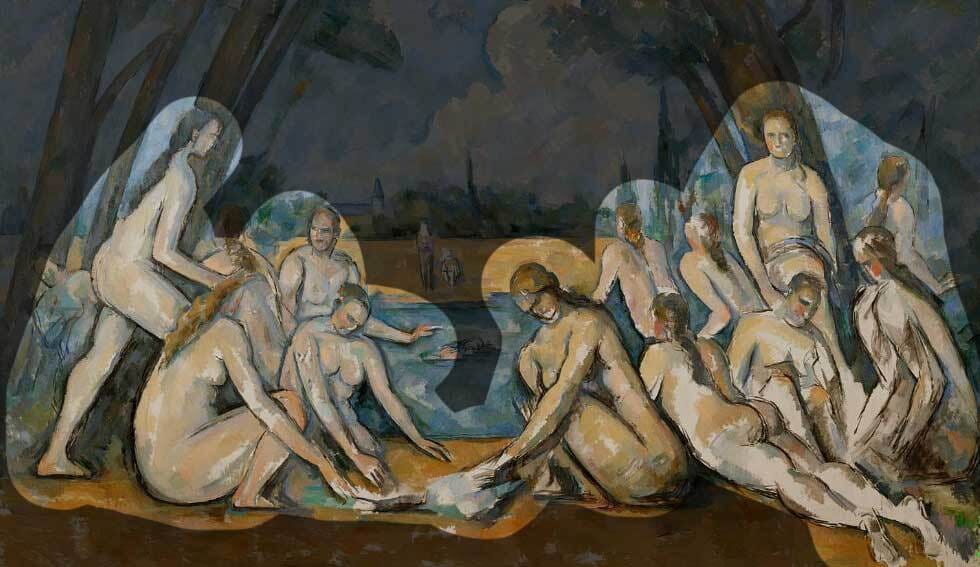
The nude figures are not seductive or graceful—they’re weighty, blocky, almost carved. They don’t swim through the canvas; they sink into it. Cézanne insists on showing the body not as object, but as form. There’s stillness here, silence, mass.
The Horizon (marked blue)
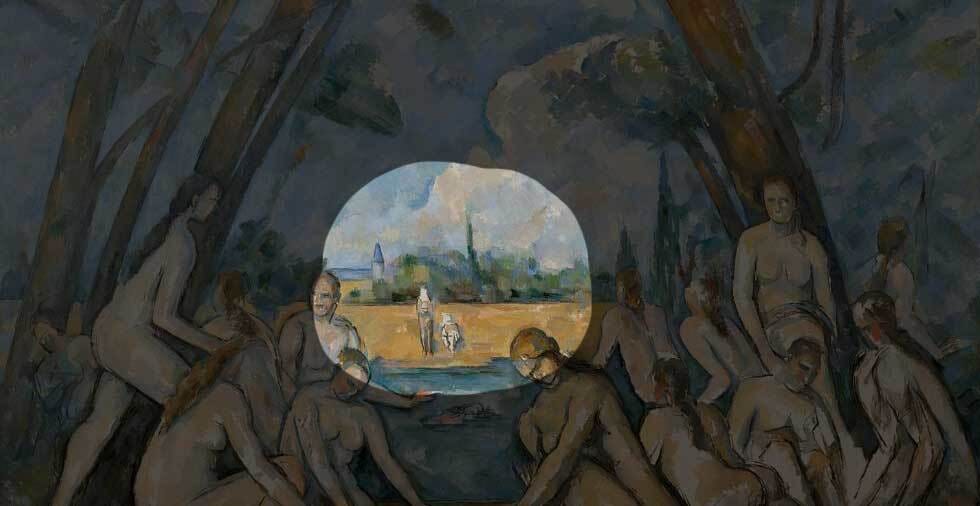
Look past the bathers and you'll spot a man and a horse, their backs turned, moving toward a steeple in the distance. It’s a subtle gesture, but telling. The wild, earthly scene in the foreground gives way to a structured world—civilization, tradition, perhaps even religion. That steeple might well belong to a church in Cézanne’s hometown, Aix-en-Provence. It's as if they’re returning to the order of the town while the bathers remain in a timeless, primal space.
The Triangular Tree Arch (marked green)
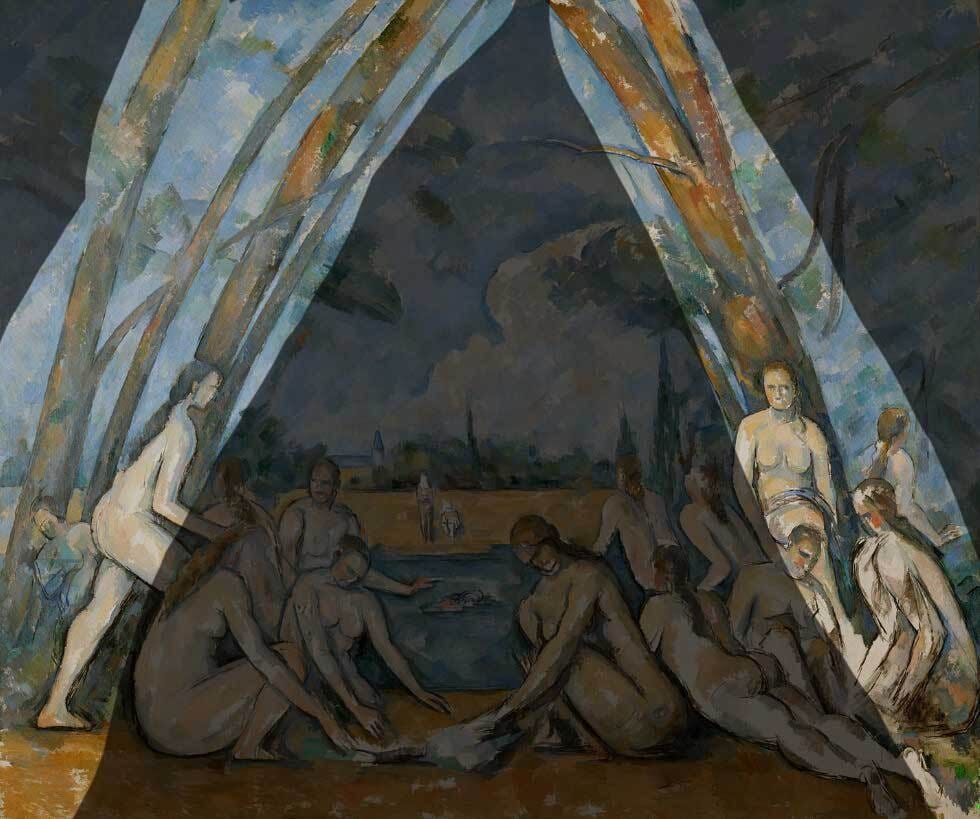
The trees form an almost symmetrical triangle that frames the entire scene. This isn’t just composition—it’s a stage. The structure gives the image order, holding even chaos in place.
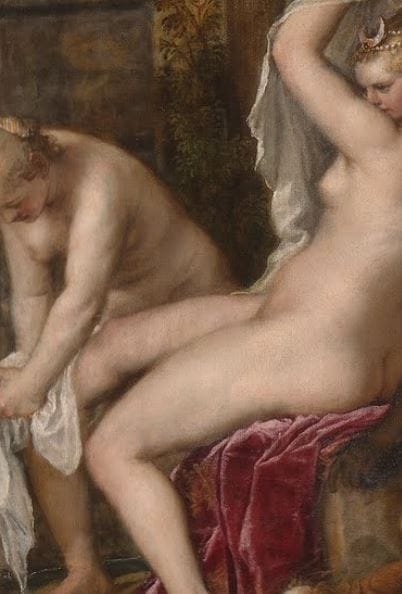 Detail from Diana and Actaeon by Titian. 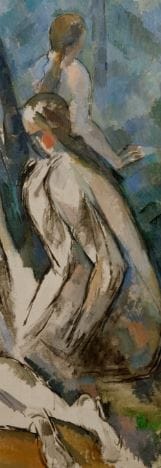 Detail from The Bathers by Cézanne, bottom right. | Fun FactCézanne likely never saw Titian’s Diana and Actaeon in person—but prints of it circulated widely in 19th-century France. In Titian’s painting, the nude female figures are graceful, dynamic, and theatrical, placed in a clear mythological story. Cézanne, by contrast, strips the narrative away. He doesn’t borrow the drama—he borrows the problem: how to place nudes in a landscape without making them decorative. His bathers are weighty and awkward, arranged like a frieze. It’s less about beauty, more about structure. He’s searching for a modern nude—one that isn’t about seduction, but about form. In a way, it’s a response to tradition through distortion. He doesn’t imitate Titian—he wrestles with him. |
Think About It 🤔
Cézanne’s Bathers don’t just show bodies—they dismantle them. He wasn’t after perfection but structure, rhythm, and a new visual language. This fragmentation of the figure didn’t end here—it opened the door to modern art. Without it, Picasso’s Les Demoiselles d’Avignon (The Young Women of Avignon) and the birth of Cubism wouldn’t have looked the same. That’s why Cézanne is often called the father of us all.
How does it relate to the here and now? or What to say during casual conversation to show off your art knowledge?
The Body Is Still Sacred – “In a world of filters, gym bodies, and digital avatars, we’re still obsessed with how we see and show the body. Maybe that’s why The Bathers feels so fresh - it reminds us that the human form doesn’t have to be flawless to be meaningful.”
Now have another Look!
And If You’re Up for More…
Head to Aix-en-Provence in 2025. The city’s Cézanne 2025 festival (June 28–Oct 12) is more than exhibitions—it’s a full immersion. His restored studio, home, landscapes and even his quarry are open for exploration. A living, breathing Cézanne experience.
It’s such a joy to see Cézanne’s incredible body of work come alive again in the town he called home. I’d love to hear what this painting stirred in you—just hit reply.
Yours,
Inbal Z M

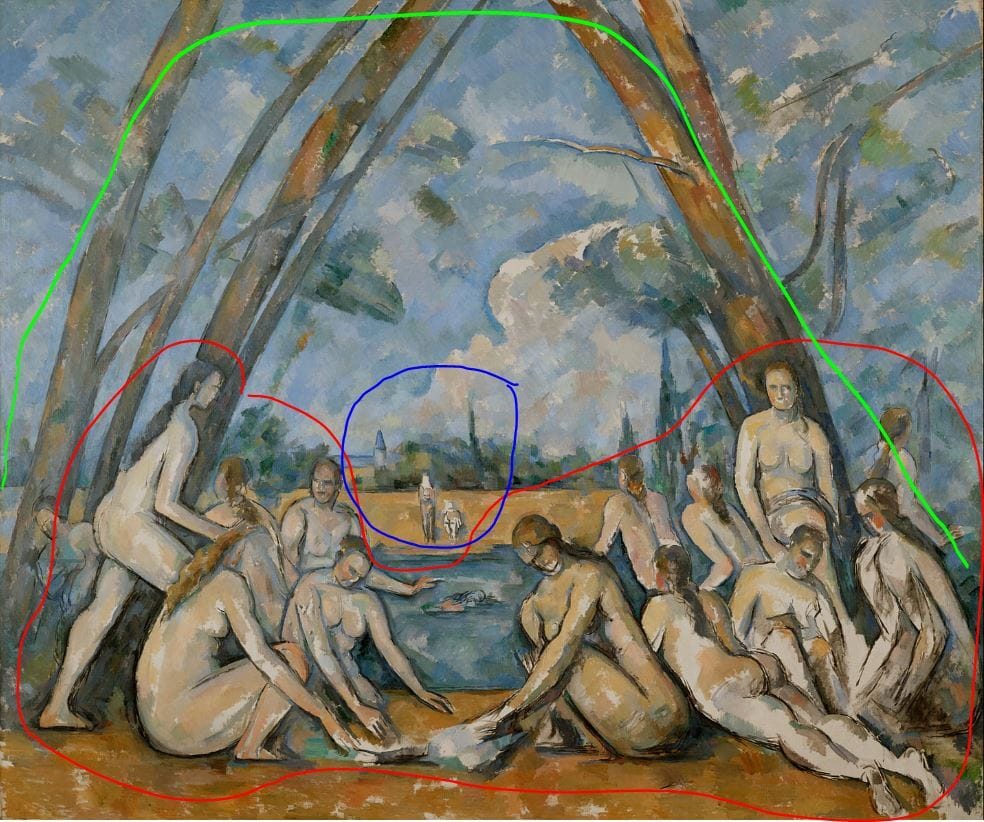

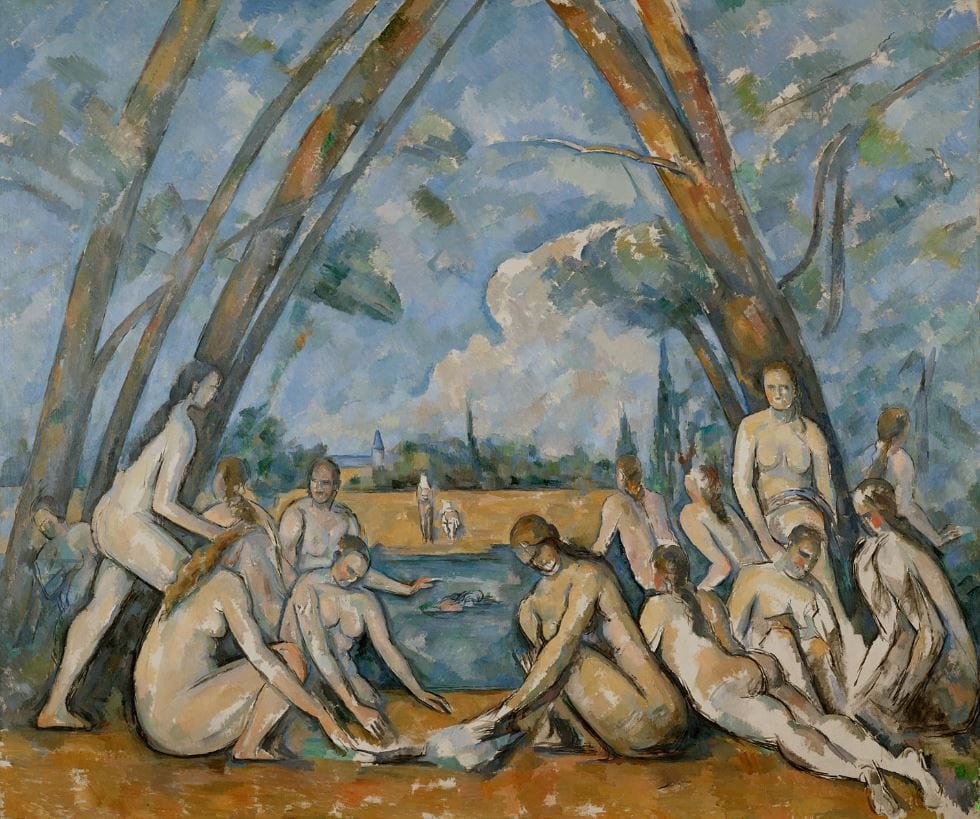
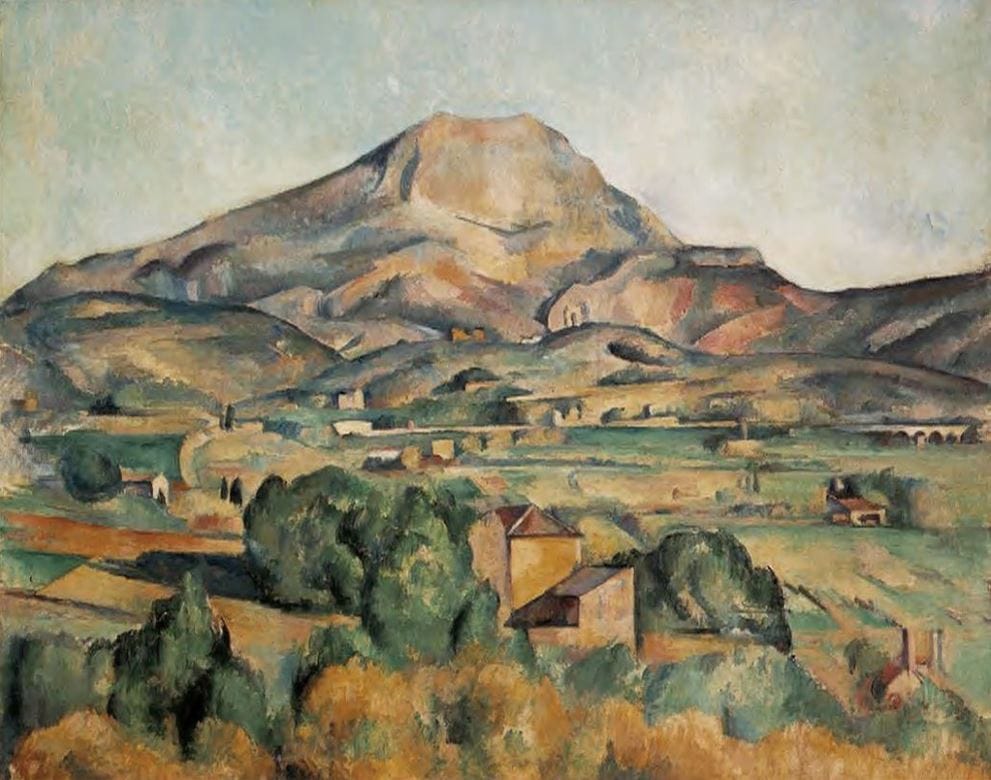
Reply